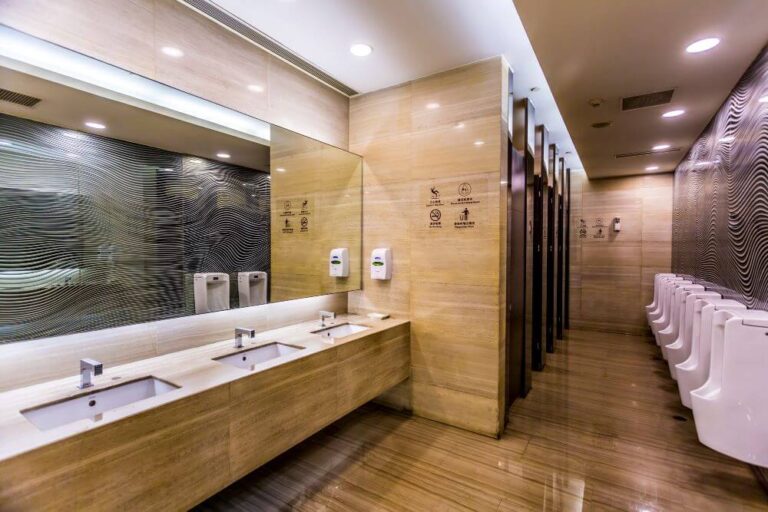Creating a functional and appealing restroom in a commercial setting involves more than just fixtures and layouts. Bathroom partitions play a critical role in privacy, durability, and style. With various materials, designs, and configurations available, selecting the most suitable partitions for your space can feel overwhelming. Here’s a detailed guide to help you make an informed decision.
1. Assess the Needs of Your Space
Before diving into options, it’s essential to evaluate your restroom’s specific requirements. Consider the number of users, frequency of use, and overall traffic patterns. High-traffic spaces, such as airports or stadiums, demand more durable materials compared to smaller offices or boutique stores.
Also, factor in privacy levels. Are you designing a restroom for a corporate office or a public facility? The level of privacy required may affect the material and layout choices. Making these initial assessments narrows down your options and simplifies the selection process.
2. Explore Material Options
Bathroom partitions are available in a range of materials, each with unique benefits. Understanding these differences ensures you choose one that fits your space and budget.
- Powder-Coated Steel – Affordable and durable, this option is popular for low- to mid-traffic areas. It resists corrosion and scratches, though it may not perform well in high-moisture environments.
- Plastic Laminate – Ideal for spaces needing aesthetic appeal on a budget. It offers decent durability but requires proper sealing to prevent water damage.
- Solid Plastic (HDPE) – Highly resistant to moisture, rust, and graffiti, making it perfect for high-traffic and humid environments like gyms or pools.
- Stainless Steel – Known for its sleek appearance and exceptional durability. It resists corrosion, stains, and vandalism, albeit at a higher price point.
- Phenolic Resin – A premium choice that handles moisture, impact, and bacteria well, making it suitable for upscale or high-traffic locations.
Evaluate the pros and cons of each material against your needs to avoid costly mistakes later.
3. Consider Durability and Maintenance
Longevity and ease of maintenance are vital factors in commercial restrooms. Restrooms are often exposed to heavy use, spills, and cleaning chemicals. Durable materials like HDPE and phenolic resin require minimal upkeep and withstand wear and tear over time.
Also, look for features like scratch resistance, anti-graffiti surfaces, and waterproof coatings. Choosing low-maintenance partitions reduces long-term costs and ensures a consistently clean appearance.
4. Prioritize Privacy and Accessibility
Modern restroom design emphasizes user comfort and accessibility. Standard partitions may leave noticeable gaps, reducing privacy. To address this, manufacturers now offer full-height partitions and minimal gap designs to enhance comfort.
Additionally, compliance with the Americans with Disabilities Act (ADA) is non-negotiable. Ensure your partitions include proper spacing, grab bars, and entry dimensions to accommodate all users.
5. Focus on Style and Aesthetics
Restroom design reflects the overall image of your business. Sleek finishes and coordinated colors can elevate the appearance of a commercial space. Whether you opt for neutral tones or vibrant hues, the goal is to create a cohesive look that aligns with your brand identity.
Partitions are available in various colors, textures, and patterns. Customizable options allow businesses to add a unique touch, reinforcing their style and professionalism.
6. Budget Considerations
While cost plays a major role, it shouldn’t come at the expense of quality. Finding the right balance between price and performance is key. Powder-coated steel partitions may be budget-friendly but could require frequent replacements in damp environments, leading to higher costs over time.
Investing in durable materials might seem expensive upfront, but it often pays off by lowering maintenance and replacement costs. If you’re working within a budget, you can explore bathroom partitions for sale to find high-quality options at competitive prices.
7. Installation and Customization Options
Ease of installation is another factor worth considering. Pre-assembled partitions save time and labor costs, but modular options allow more customization and flexibility. Work with a contractor or supplier who offers installation support and guidance to ensure a seamless setup.
Customization options, such as engraved panels, integrated storage, or anti-microbial coatings, further enhance functionality and appearance. Don’t hesitate to incorporate these features if they align with your needs.
8. Environmental Impact
Sustainability is becoming a higher priority in commercial design. Many manufacturers now produce eco-friendly partitions made from recycled materials. Options like HDPE often include post-consumer content, reducing the carbon footprint while providing long-lasting performance.
Look for certifications such as GREENGUARD or LEED compliance to ensure your partitions meet environmental standards. Going green not only benefits the planet but also appeals to environmentally conscious customers.
Final Thoughts
Choosing the right bathroom partitions for your commercial space requires thoughtful consideration of materials, durability, privacy, and design. By evaluating your needs and balancing cost with performance, you can create restrooms that are both practical and visually appealing. Whether your focus is style, sustainability, or resilience, there’s a solution to match every requirement.


